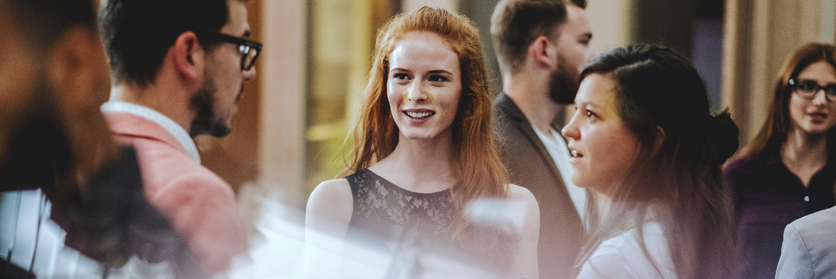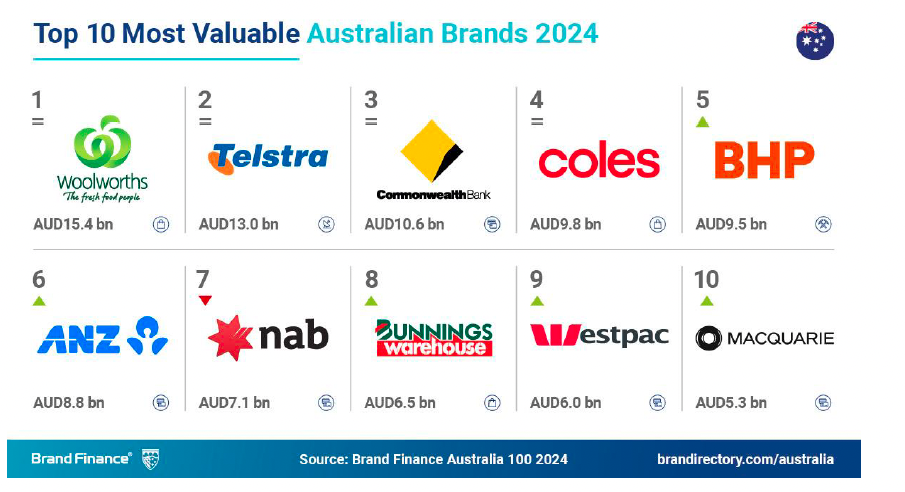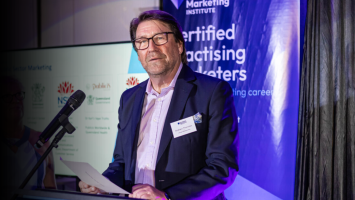Accenture Song’s global, APAC, ANZ design-product chiefs on transformation’s next wave, moving beyond experience ‘chicken nuggets’, undercooked personalisation
What you need to know:
- Fjord founder turned Accenture Song’s global design and product chief Olof Schybergson was in Australia last week meeting the likes of NRMA, Qantas and Tourism Australia, outlining what he sees as the key frameworks for the next wave of customer transformation.
- That is, “minimising the mundane and maximising the humane” via “fluid experiences” that go beyond pointing people at a website or app and delivering off-the-shelf personalisation while also creating new products and revenue lines via genuine added customer value.
- Key to all of that is moving design upstream. Otherwise there’s a risk of ending up with more “chicken nuggets” experiences, i.e. “bland” homogeneity that won’t cut through or drive growth.
- Schybergson unpacks three examples of what he thinks good genuinely looks like – across travel, consumer products and publishing.
- ANZ design and digital products lead Fabio Buresti says he’s never seen the level of ambition for customer transformation currently brewing from Australia’s blue chips. But he says there’s good reason: Take the logos of any local airline or streaming service and you couldn’t tell them apart. Everybody has the same kit, processes and templates and it’s showing, badly.
- Accenture Song APAC design and digital products chief Cristiano Dencker relocated to Sydney from Sao Paolo last year and was struck by the penetration of personalisation and recommendation engines. ”Everyone has one”.
- But he thinks too few are being properly harnessed and personalisation as a differentiator in and of itself, “is BS”. Dencker urges businesses to shift their mindset and operating model – and prize experience experimentation over perfection.
As we digitised everything, we also made things that should be really humane and interesting and emotionally strong – we made them quite bland.
Nugget of truth
When Accenture acquired Fjord in early 2013, it was 200 people. Now there’s 4,000 staff within the design and digital products unit headed globally by Olof Schybergson, who cofounded Fjord in 2001.
A sign of the times, but Schybergson thinks all of that firepower is required, given the blandness of digital interfaces and experiences across the piste, a homogeneity he’s previously described as customer experience “chicken nuggets”, because businesses are largely using the same tech, systems, processes and approaches. Which means a lot of digital transformation, while table stakes, isn’t standing out and won’t drive growth, despite huge investments.
“As we digitised everything, we also made things that should be really humane and interesting and emotionally strong – we made them quite bland,” says Schybergson.
He sees vast opportunity in “minimising the mundane and maximising the humane” via “fluid experiences” that go beyond pointing people at a website or app and delivering off-the-shelf personalisation via messaging that may – or may not – have any impact. Schybergson thinks delivering such experiences requires design to move further upstream within corporate structures.
“Does personalisation and design go nicely together? Yes. Do you have to have design to get good personalisation? Not always. When you add design to personalisation, does it always make it better? Yes. Does good design help come up with more transformational solutions than what you would get out of the box. Yes,” he told Mi3.
“Most importantly when you think about design, it should be applied in organisations in the way that they apply it today, which is to make things simpler to engage with, more uniform, more consistent, clear, coherent, and so on – that’s what you expect today, that sort of design execution, design-making. But to get full value from design or unlock the power of design, you also need to apply it early on in the process and challenge design to ask interesting, provocative questions and bring different parties together, maybe from different parts of the organisation, but also customers, to create things together and facilitate conversations.”
From there, he says, come “new futures and new business models that you probably would have been hard pressed to find without the power of design. So design, of course, is useful in execution. But design is also really important and a real superpower in invention of anything new.”
“It’s essential that any larger organisation puts design in an empowered role and uses it both for inventing and for execution.”
Fortune improved
Schybergson cites recent work with Fortune and beauty products firm Shiseido as examples of fluid experiences creating new services, revenue lines and products. (While still early in the process, he says NRMA’s ambition to genuinely transform is at least equal to that of leading global firms – though the most outlandish attempts to move beyond the nugget are currently coming out of the Middle East.)
“We worked with Fortune, and in particular Fortune 500, for 10 months to explore what happens if we put a completely new experience at the front of all your content, all your data, all your information,” says Schybergson.
“For them it was really important to ensure that whatever is created … still has that journalistic rigour and integrity, but we essentially fed all the [Fortune 500] content into a large language model and then put a conversational interface on the front of it, which also allows you to do data visualisation in new and dynamic ways.
“That led to moving [beyond] an experience which is cumbersome and inhumane. If you wanted to figure out some correlation between data points or companies or whatever, in the past, you’ve essentially been just interrogating a big online spreadsheet. Now, you are able to go in and ask simple questions in a much more conversational way that you would with a human – a super smart human,” says Schybergson.
“Then you can interrogate it further, it remembers context and so on. So that created a total new media experience for them, and out of it came a new business model as well. Now it’s called Fortune Analytics – and it’s a subscription service for researchers and people in media and business leaders.” (And for ‘a short time only’, the genAI-powered SaaS version is free…)
“You could do all of [that] with clever technology, but design was at the very centre and at the front of figuring all of that out – from business model through to the experience and how to make sense of it in a very intuitive way for the end customers and users,” says Schybergson. “So I think that’s a good example of a smart combination of modern technology and design.”
It's essential that any larger organisation puts design in an empowered role and uses it both for inventing and for execution.
Saving Shiseido stalling
The Shiseido project rolled 36 brand loyalty schemes into one and built a program that goes somewhat deeper than collecting and redeeming points. Personalisation went down to DNA-level via customer saliva samples, and to individual skin tone via selfies, with recommendations adjusted daily to weather, humidity what mode of transport customers will be using that day etc. It’s now powering revenue, profit and winning awards (i.e. Red Dot, Good Design and iF), per Schybergson – but it almost stalled.
“We partnered with them, had done lots of stuff over a long period of time (the two inked a joint venture in 2021), so we then came to them with essentially a design-led vision for a better experience, a better human-focused service – and they absolutely fell in love with it.
“But when we looked at how easy or difficult it would be to create, it turned out that their tech stack, their data and so on, was in pretty bad shape. So we would have to do quite a lot to fix that to enable the experience. They said, ‘Well, that’s quite expensive, I’m not sure we can do that.’”
Accenture being Accenture, there was a solution in the form of a mutually beneficial upsell.
“We said, ‘why don’t we also actually modernise your tech stack and your data and so on for use across all of your business?’ That became a big program for Accenture, to modernise their tech etc., which drove down the cost of their IT, infrastructure, workloads and so on. And that freed up money to invest in this new innovation, which we then went on to build,” says Schybergson. “But it led with design, and then the tech enablement, which took quite some time, and then the training of the employees – and then they turned the service on.”
Saudi lift-off
Schybergson’s next example of “minimising the mundane” comes via the massive services agreement Accenture went public with last year with Saudia, Saudi Arabia’s national carrier airline, promising to deliver circa 260 new digital services in two years, i.e. 2.5 a week.
“Saudi Arabia have this very bold 2030 vision for the country and its role in the world. Amongst that is travel to the country: They want to have 100 million visitors a year, and they want 10 per cent of the GDP to come from tourism and travel – a massive increase from where they have been,” says Schybergson.
“Core to that is their flagship carrier, Saudia Airlines, and they have been really in a pretty bad place in terms of customer experience rankings of global airlines. So two years ago, we did a deal with them, which was a partnership deal, kind of a joint venture, where we said, we’re going to help modernize your experience end to end, and we’re also going to innovate your experience.”
He thinks Accenture can take some of the credit for Saudia this year being awarded the most improved airline of 2024 for customer satisfaction – “a lot of that points back to the various digital experiences we’ve completely rethought and redone,” per Schybergson.
Within that, he’s perhaps most proud of the conversational search and commerce tools developed under the Saudia program via what it calls the travel companion.
“We’re taking the very commoditised and tedious process of booking and turning it on its head and exposing it as a conversation where you can start at any point. So you could say, ‘I want a hiking holiday with my family. Where should I go?’ Then it can start to collaborate with you and suggest things to you, show those places to you, give you price and so on. And then you book something with them. It can start to tailor that experience for you in various different ways. If there’s a problem or you want to change it to something else, you can also go in and you can change it – not the usual way, but actually simply by talking to someone, chatting to this agent,” says Schybergson. “For me that is minimising. So you take the traditional process and you blow it up, and you ask the question, ‘how could we make this more natural, more intuitive, a bit more like a human conversation?’ Rather than this tedious process – whether it’s an OTP travel booking site or it’s an airline or it’s a hotel – where everyone is the same and everyone forces you through the same process.”
It seems to be working: The IMF said last week Saudia Arabia has already beaten its 2030 target, with tourism’s overall – direct and indirect – contribution to GDP reaching 11.5 per cent in 2023, though the bulk of those numbers are from domestic tourism – there’s still a way to go internationally.
[For Australia's airlines and streaming platforms] all the UX, the UI, how it all comes together – it's a cut and paste of the logos on each of them … We’ve literally all designed the same thing because we're looking for efficiency. No one's looking for that breakout growth and how we can turn up differently.
Stream of sameness
Airlines closer to home could perhaps take note, suggests Accenture’s ANZ design lead, Fabio Buresti.
“I was at a major Australian airline conference earlier this year. We put up basically all the airline apps in the category [on a slide] and they all look the same. You literally can’t tell the difference and they [delegates] were struggling to tell the difference apart from a colour here or there,” says Buresti.
“With all the design patterns and behavioural patterns we’ve got … we’ve literally all designed the same thing because we’re looking for efficiency – and no one’s looking for that breakout growth and how we can turn up differently.”
He suggests the streaming services fighting for share are likewise falling into the same trap.
“You put them all up, all the UX, the UI, how it all comes together – it’s a cut and paste of the logos on each of them. No one is trying to be something different and that is going to be the next generation of change here,” says Buresti.
“AI, all the great tech coming through is going to be great. But when everyone’s got the same tech tools at their disposal. How do you actually then push it further? That’s where creativity from an engineering point of view, from a customer experience point of view, brand point of view – bringing all that together is going to be even more critical.”
Especially, he says, as brands realise “that their legacy tech is running out of road”. After a post-Covid lull, Buresti reckons “the ambition has gone through the roof” locally for building a customer transformation strategy, with the likes of “Qantas, Tourism Australia and NRMA” busting to get moving.
“I’ve never seen it, from this side of the world, the ambition to lead in this space being so strong.”
Personalisation oversold, undercooked
A cynic might suggest they’ve heard similarly bullish statements about CX and transformation over the last decade – alongside massive martech investments apparently now requiring an overhaul.
But Accenture Song APAC design and digital products chief Cristiano Dencker says that’s precisely the point – everybody had to invest in transformation during Covid and its immediate aftermath. But they all bought the same stuff, digitised the same processes and now “everything looks the same”.
Vendors suggest personalisation in itself is the differentiator. Dencker is unconvinced.
“I think it’s BS, because if you really look into what people are doing in terms of personalisation, there’s not much. Actually, most of the experience is average. There are some recommendations or tailoring messages etc., but the reality is that we don’t see a lot of personalisation out there, and part of the problem is because the products are the same, the processes are the same. Also you have a big bottleneck in your ability to create content, to really personalise the experience. So it became a bit of a vendor and agency spiel, but if you look in practice, it’s not happening,” says Dencker.
“Gen AI and all these new technologies unlock that – but we are in just the beginning of the journey. This will take another 20 years. So what we’re trying to do with this ‘fluid experience’ point of view is to give a bit of a framework on how to think about that in new strategies moving forward.”
The old mindset is everything that goes to the customer needs to be perfect. The new mindset [needs to be] ‘I'm launching hundreds of experiences. Who cares if one experience is not working so well? We’ll fix it'.
Recommendation engines misfiring?
Dencker, a three-decade Accenture veteran previously running Accenture Song Latin America before relocating to Sydney at the start of last year, said he was “surprised by the level of penetration certain solutions have in Australia”. He points to AI-powered recommendation engines and name-checks the likes of Salesforce and Pega.
“In other regions, these are things only the banks have, because they have the money. Here, even electricity companies have them. Everybody [big] has them and have been able to learn from customer behaviour and recommend products, recommend messages, things like that. There are exceptions, but a lot of times, what we find is that people are not using them to its entirety, because they outsource a bit to the tech. But you really need to change the way you were. You need to have a team with the growth hacking mentality to test the stuff all the time.”
Content, he reiterates has been “a big bottleneck – even if I had 100 segments, I couldn’t produce 100 variations that are meaningful and differentiate.” While genAI can solve that problem, Dencker underlines a mentality shift is now required – one that is far more open to experimentation and far less concerned with perfection.
“Companies need to think like a platform. Everybody needs to think like Amazon and Google – but a lot of companies are not there yet, they still apply the old frameworks,” he suggests.
“You need to have an operating model where you have a lot more flexibility to try new stuff, you cannot be very conservative in not testing things and being too precious about what you’re exposing to the customer. The old mindset is everything that goes to the customer needs to be perfect. The new mindset [needs to be] ‘I’m launching hundreds of experiences. Who cares if one experience is not working so well? We’ll fix it,” says Dencker.
“This is the mindset that the Amazons, the Googles of the world, they are really good at – and the banks, telcos, all industries, they need to learn how to do that too and really apply it,” he adds.
“A lot of the [transformation] talk has been about the tech – and not actually this sort of operating model.”
If the Accenture Song design brains trust is right, perhaps the next wave of transformation really will be different. If not? Some people genuinely like chicken nuggets.





